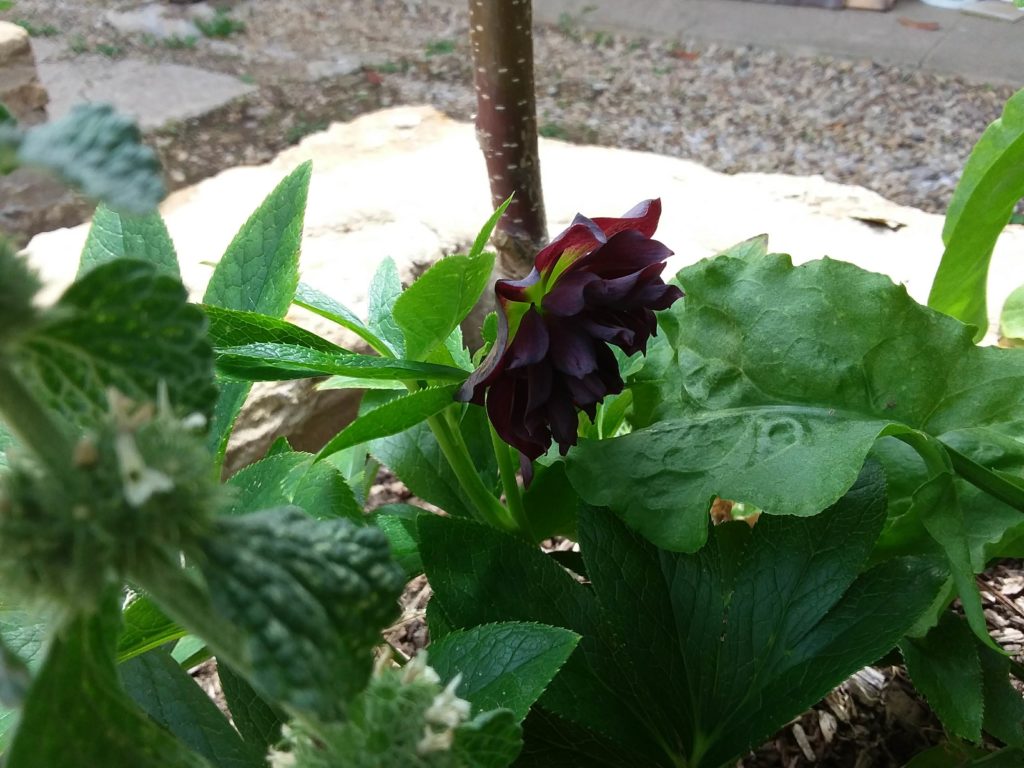We were visited at the weekend by the glorious cat Isambard, accompanied by his faithful attendants.
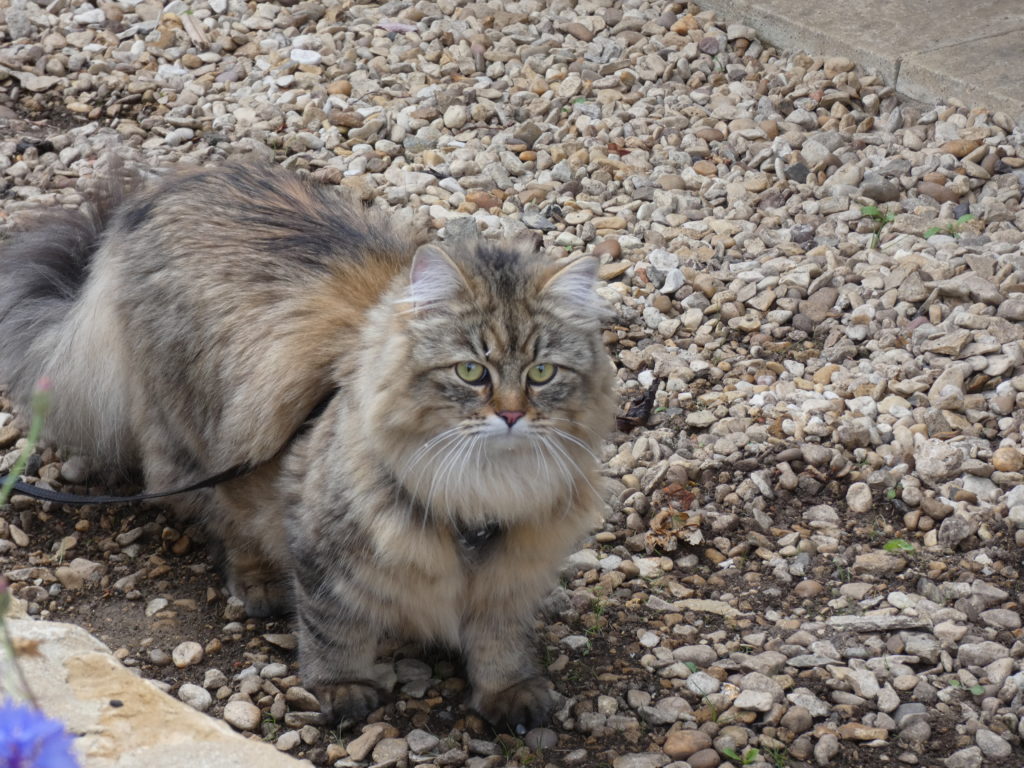
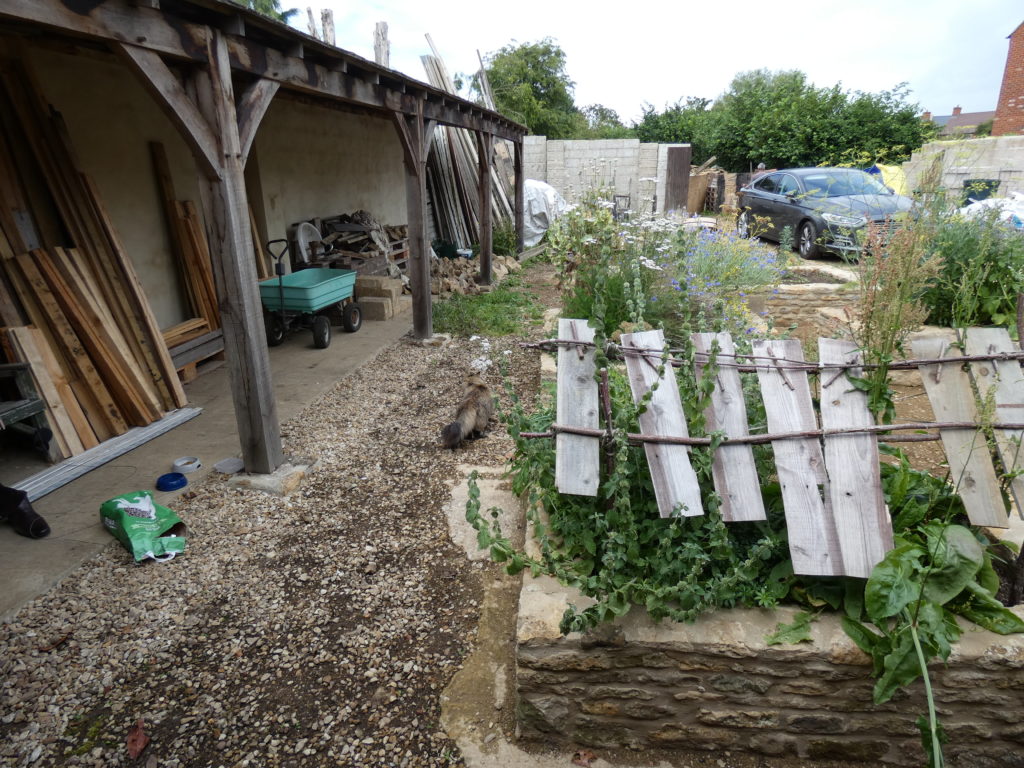
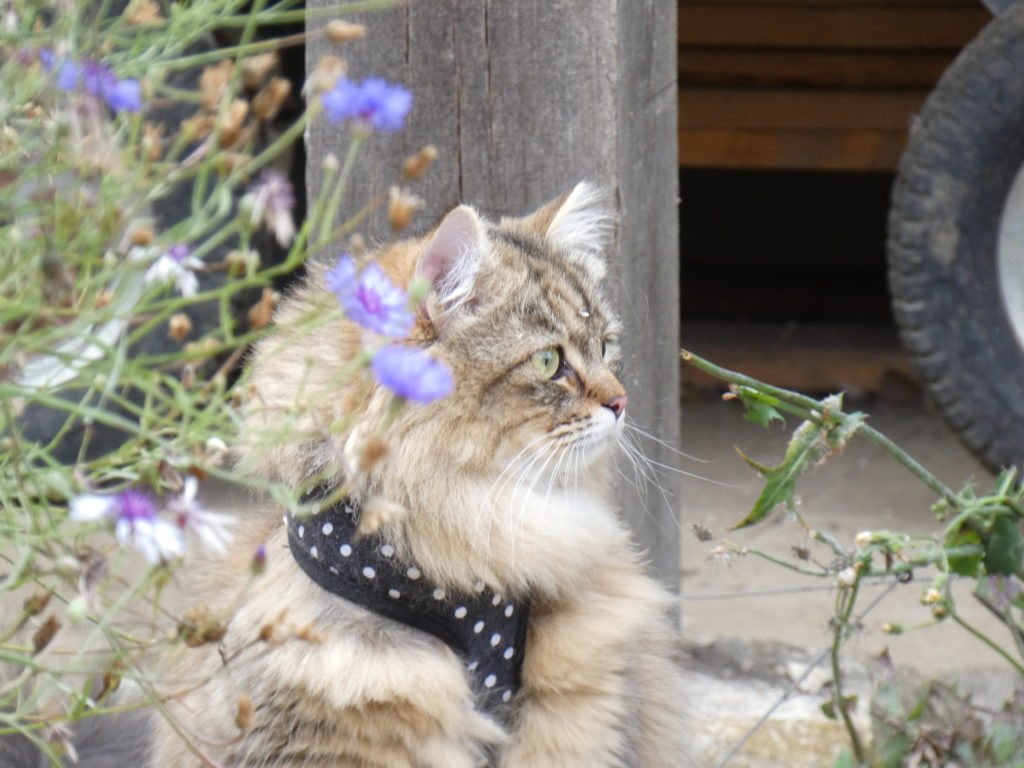
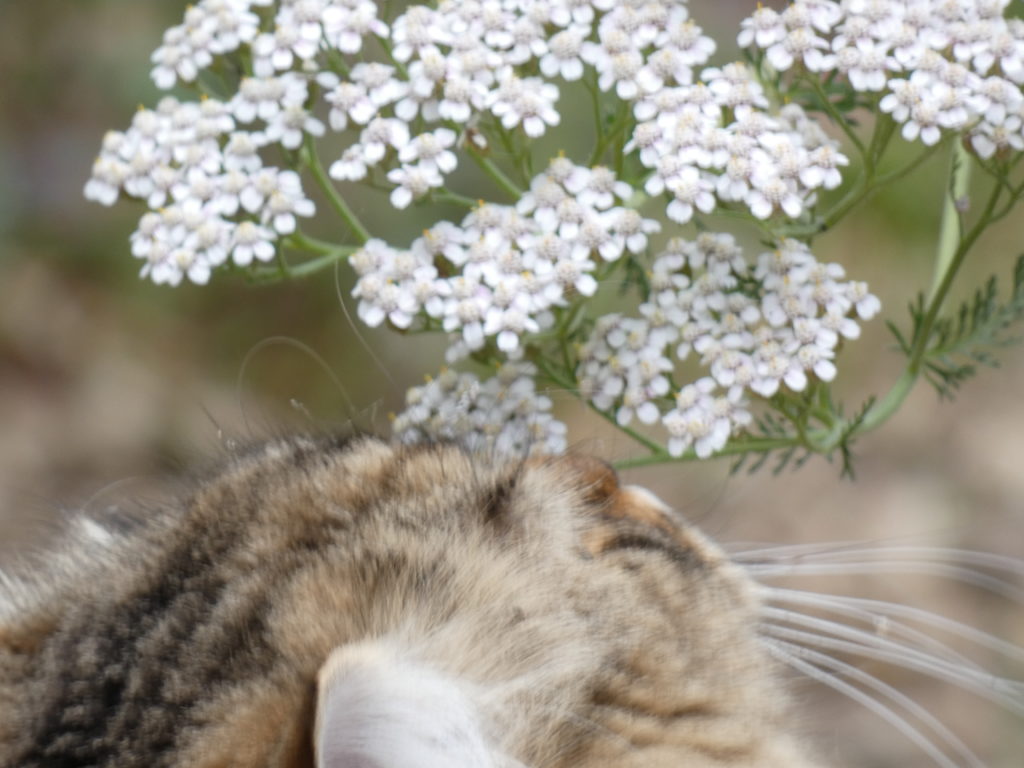
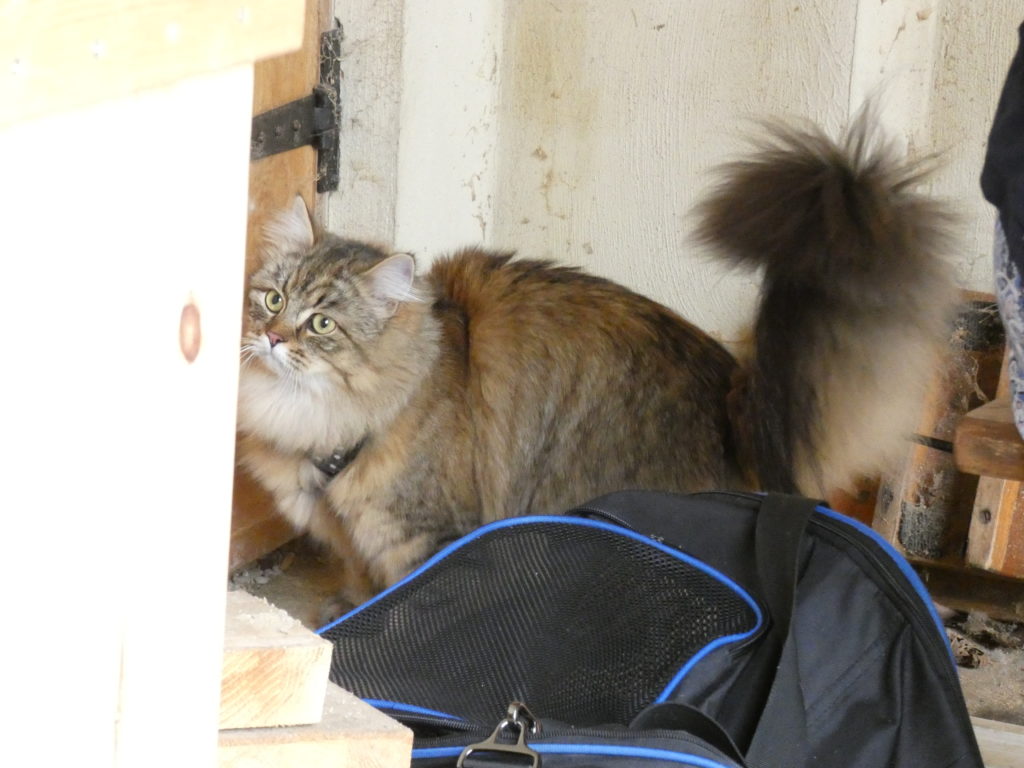
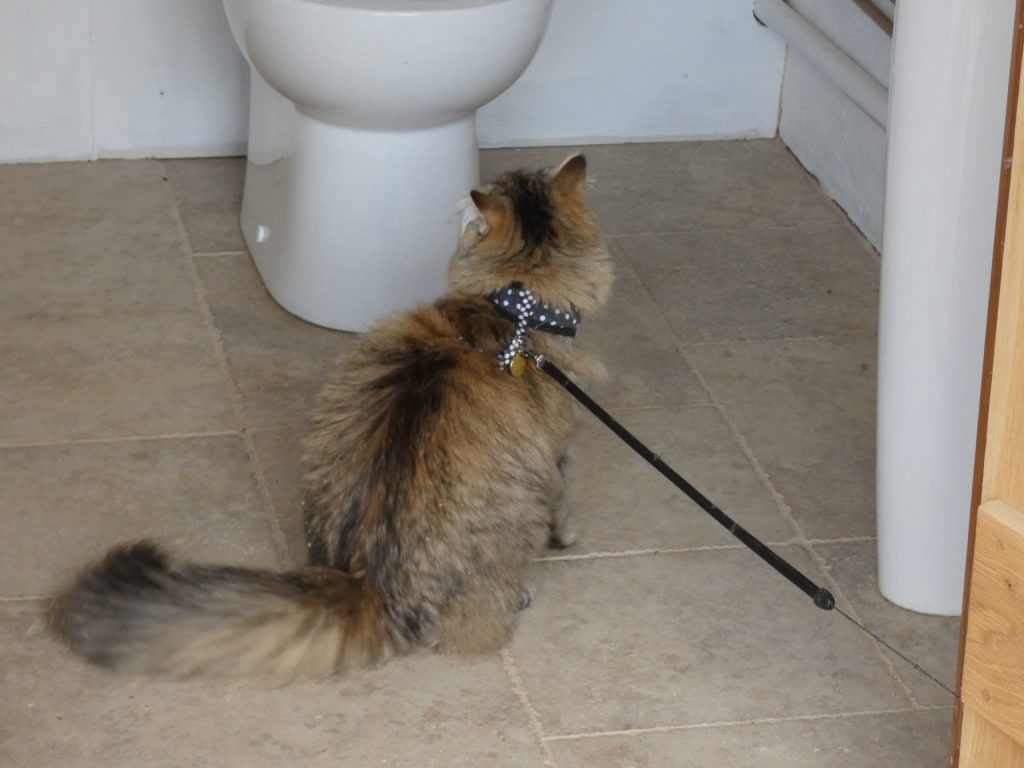
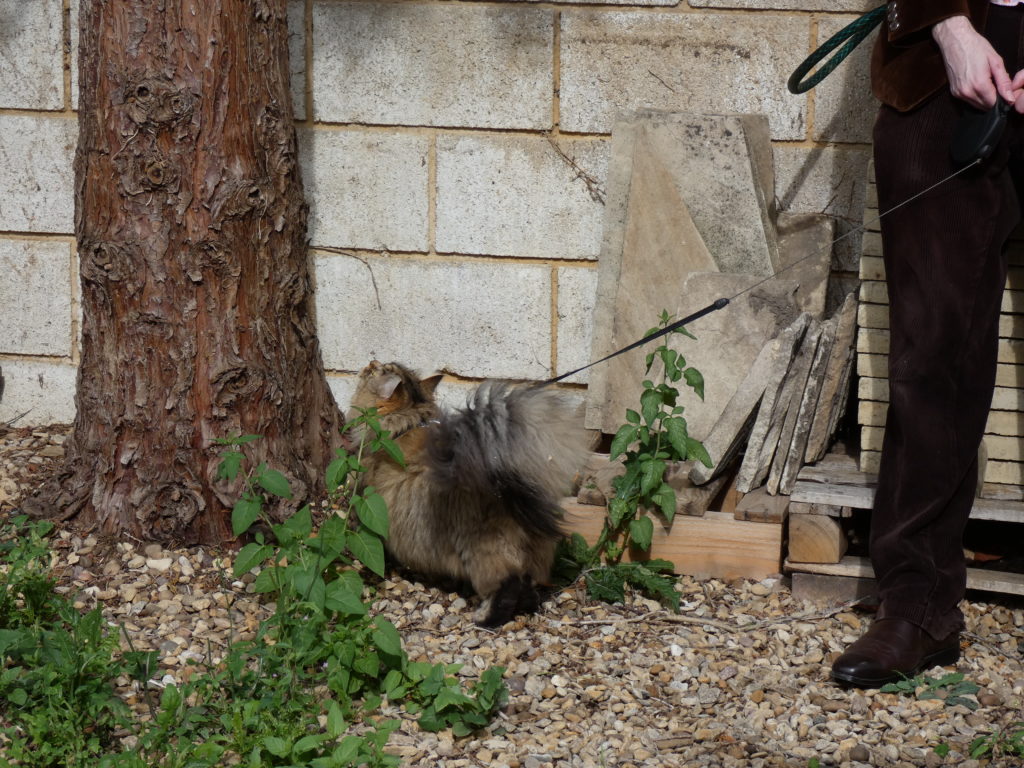
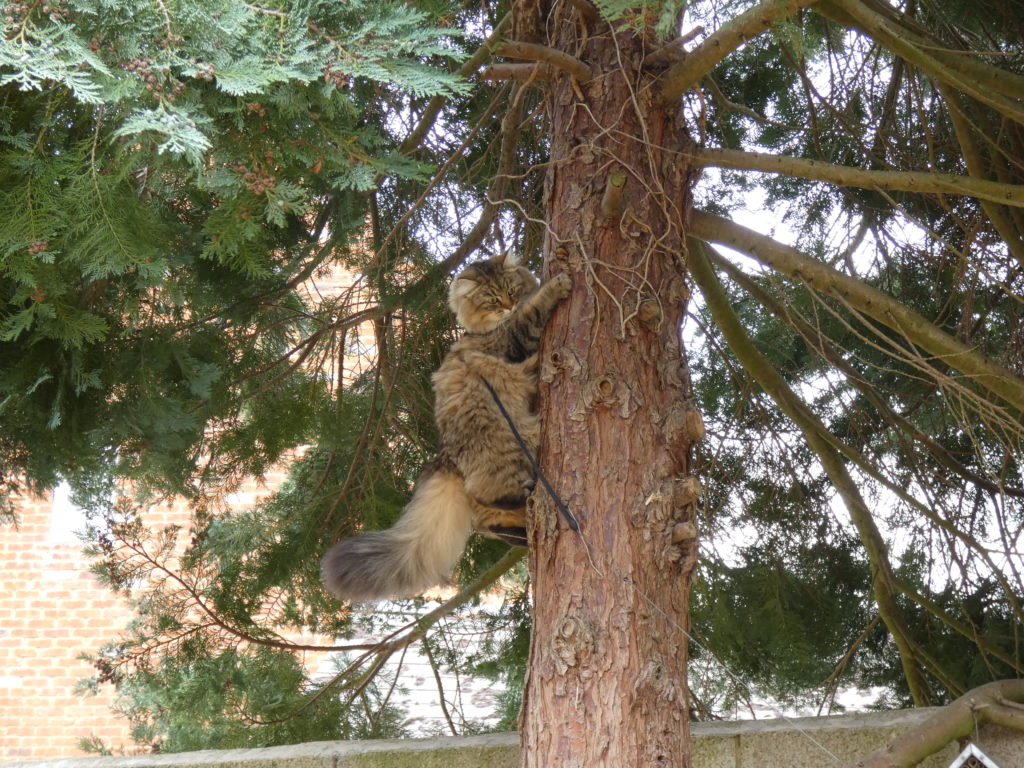
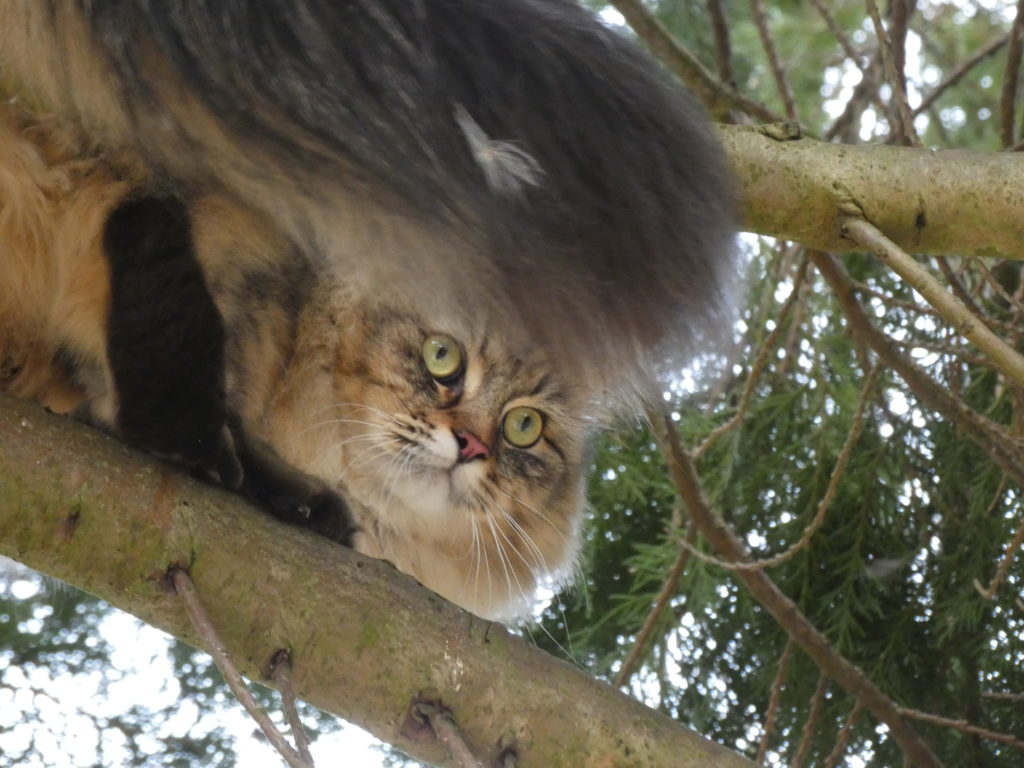
I make no apologies for the photo blast. Isambard is the most handsome cat ever to grace the gardens at Rumwoldstow!
We were visited at the weekend by the glorious cat Isambard, accompanied by his faithful attendants.









I make no apologies for the photo blast. Isambard is the most handsome cat ever to grace the gardens at Rumwoldstow!
In these times when we have literally no idea what is going to happen next, it seems a bit daft but I have embarked on what is likely to be a ten year project. This is the Quest for the Pippin of St Rumwold. I’ve now planted two apple seedlings that had germinated inside the apple; these are imported apples that have been in cold storage and so were ready to germinate. I plan to try local English apples when the season comes round, which should be more suited to the local climate, and I would guess that if you start with a better apple, you’re more likely to get a better pippin.
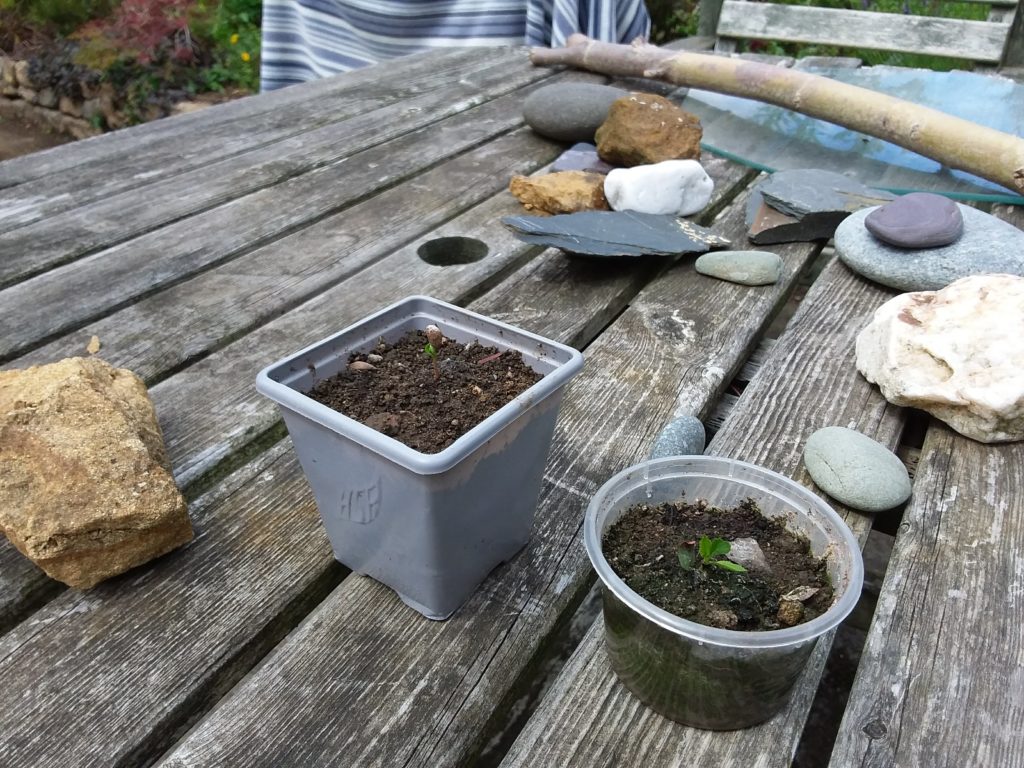
The thing about apples is that they are pollinated by at least one, maybe two trees of different varieties and the seedlings apparently don’t necessarily resemble the parent tree. I’ve always wanted to try growing apple trees from seed but never got it together. I read that it can take seven to ten years to discover whether a seedling will bear eatable fruit or whether it has reverted to something like a crab apple. I’m hoping that if I persist, then I will eventually grow even just one tree with a tasty apple, that will be unique to Rumwoldstow. Ambitious plans for two of the tiniest seedlings you’ve ever seen!
In the Rumwoldstow garden, we have the first flowering of the Madonna lilies. I planted three bulbs a bit late in the spring, and they’ve all come up but the other two don’t seem to fancy flowering this year. Aren’t they lovely? If they get properly established they’ll be fab.
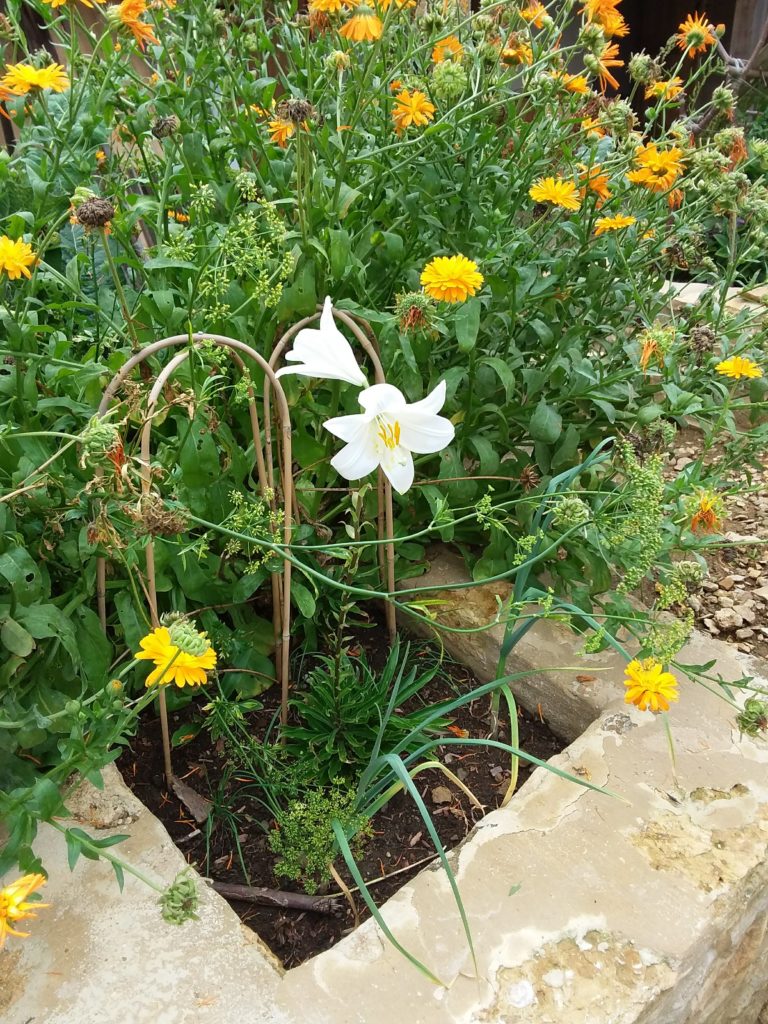
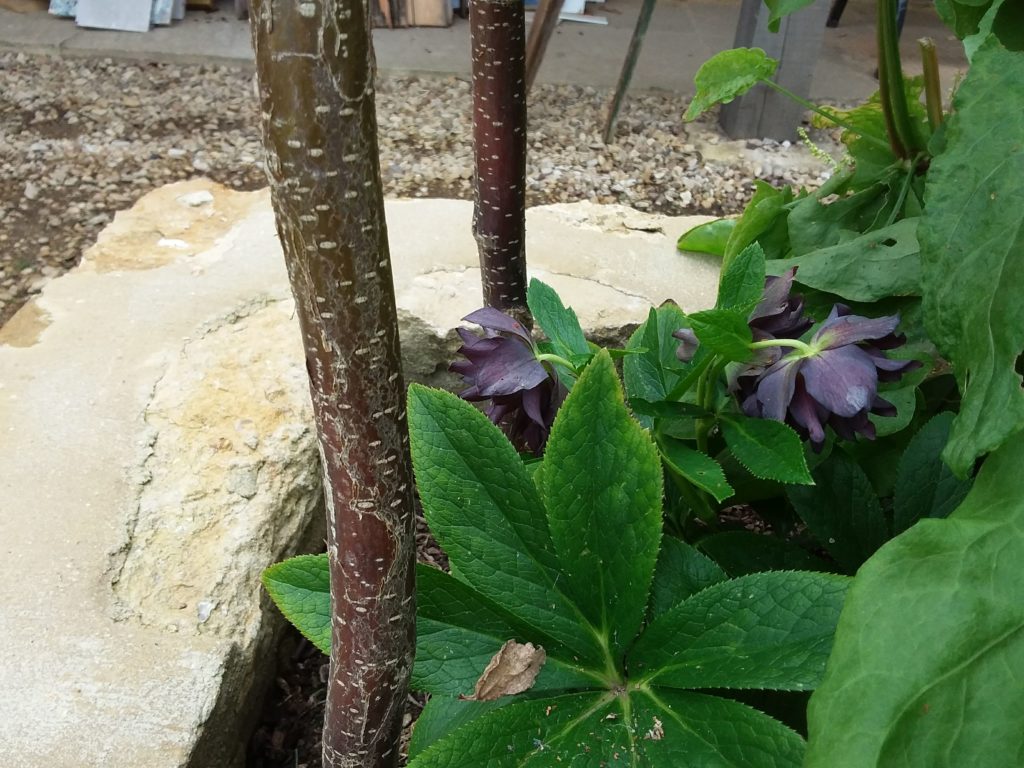
The Christmas rose (hellebore) continues to defy the seasons and is flowering like a good ‘un. And we have one other vegetative miracle in the form of a time traveller…a potato plant has sprouted in amongst the heartsease, strawberries and sorrell! Brother Julian dug in some compost and I guess there must have been potato peelings. At this point I might as well let it grow, and hope for some harvest later in the year.
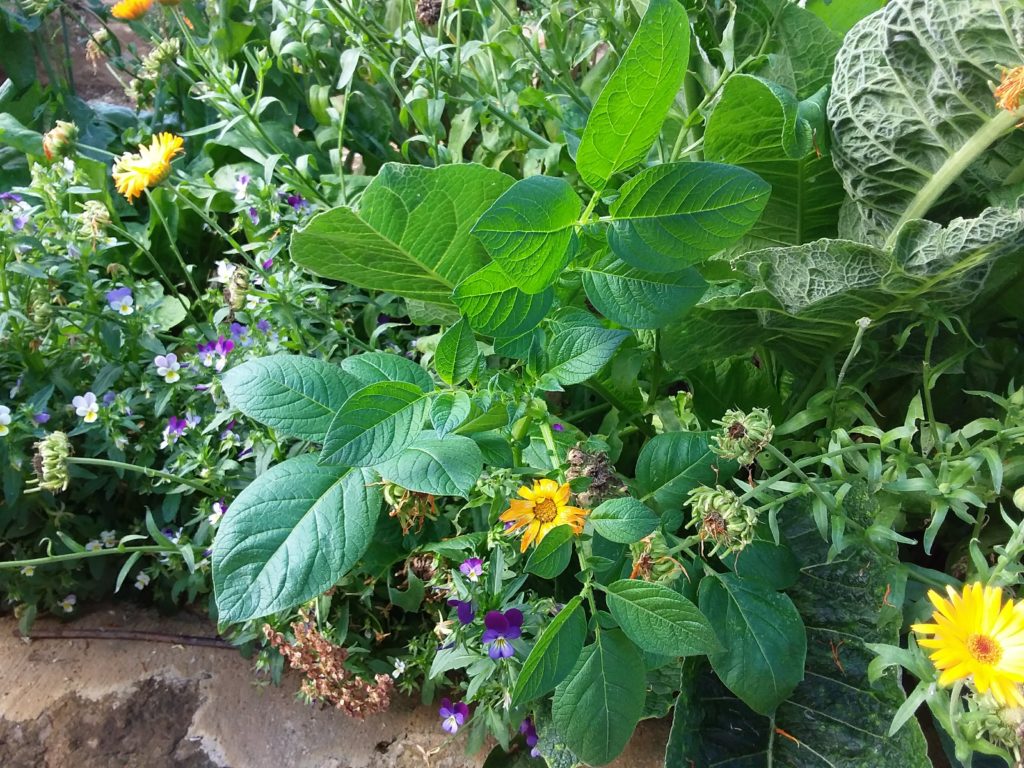
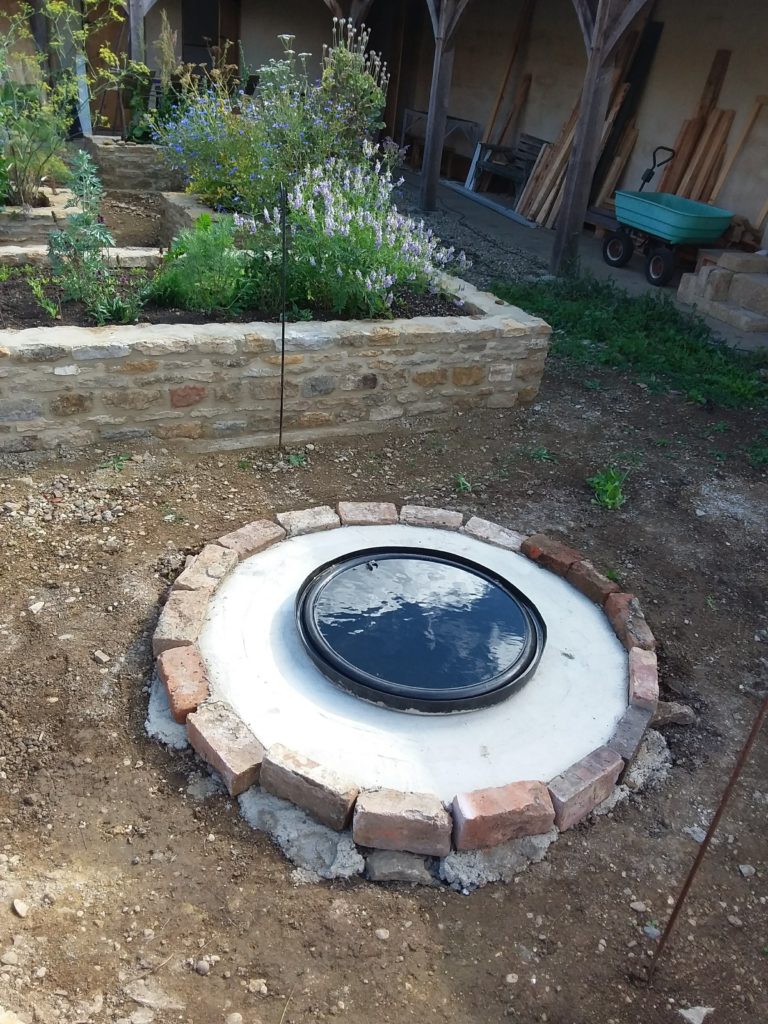
Construction work continues; the Roman well (ahem) is now set in a firm foundation ready for the wall to be built around it. And brothers Alf and Julian are hard at work on the foundations for the Roman gatehouse.
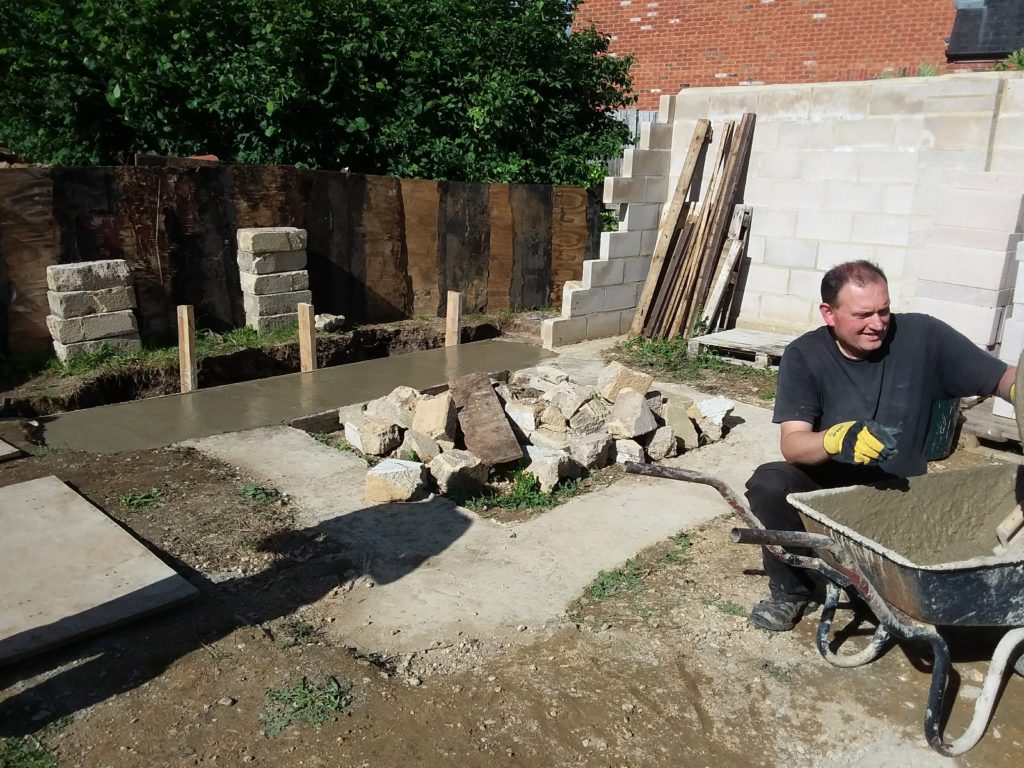
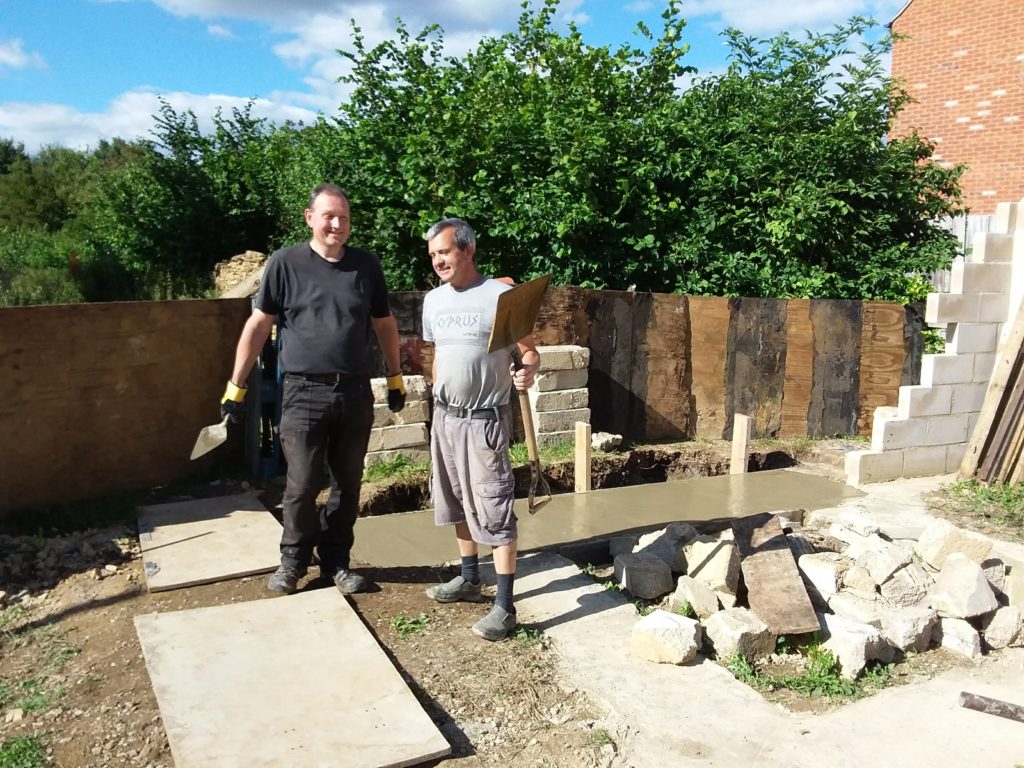
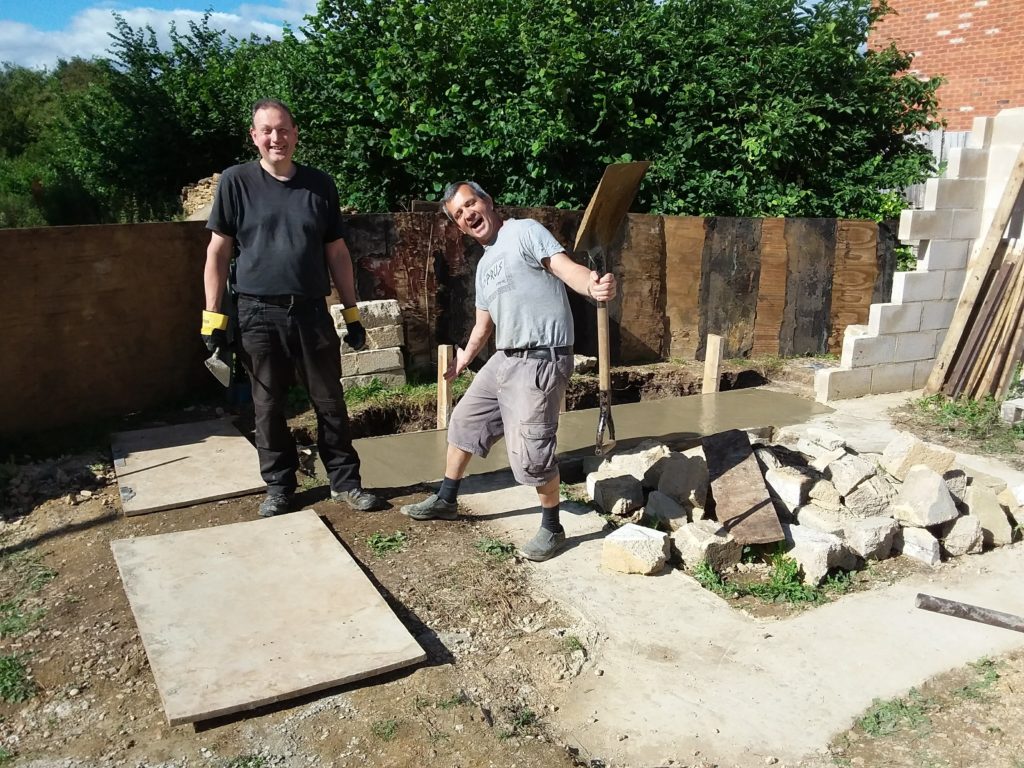
We’re looking forward to the return of Chris the Stonemason, who this year built the new raised bed in the Rumwoldstow garden and also rebuilt the side of the bridge across the Black Brook. It looks well posh, though everybody keeps asking when is the other side going to be done…the problem is that the other side is a strange bodge-up with a rotting railway sleeper supporting the road bed, unlike the fancy side with the beautiful stone arch. My guess is that the bridge was originally lovely all the way through but narrower, and then somebody widened it for farm vehicles. Anyway, it’s now safe to walk on.
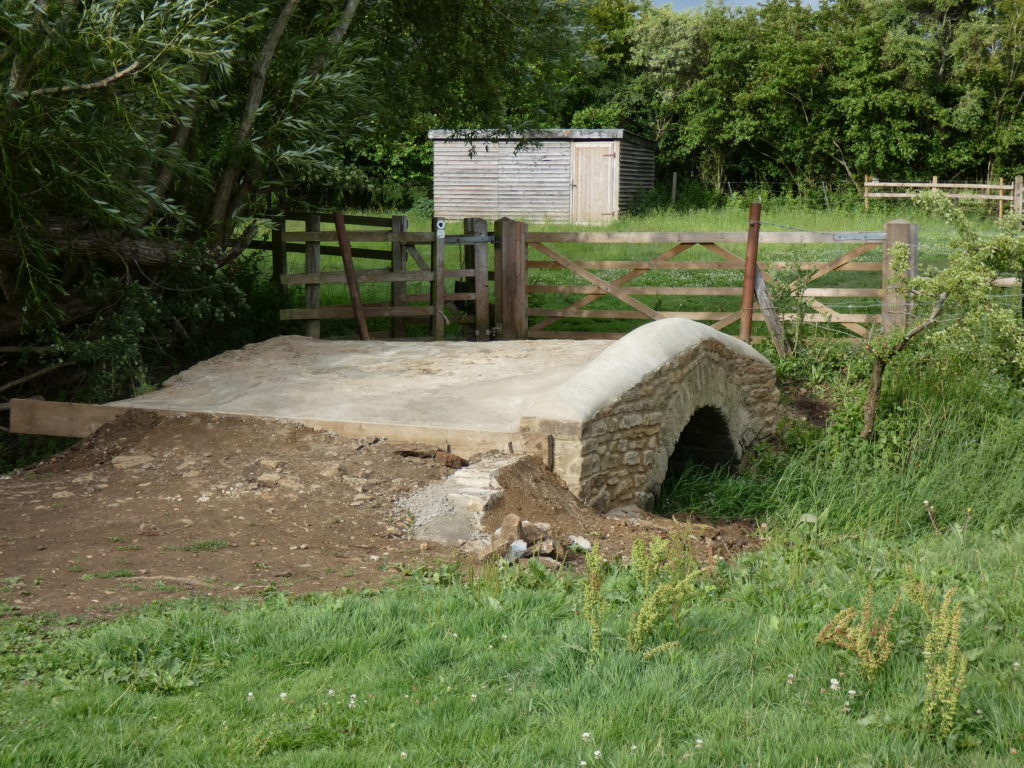
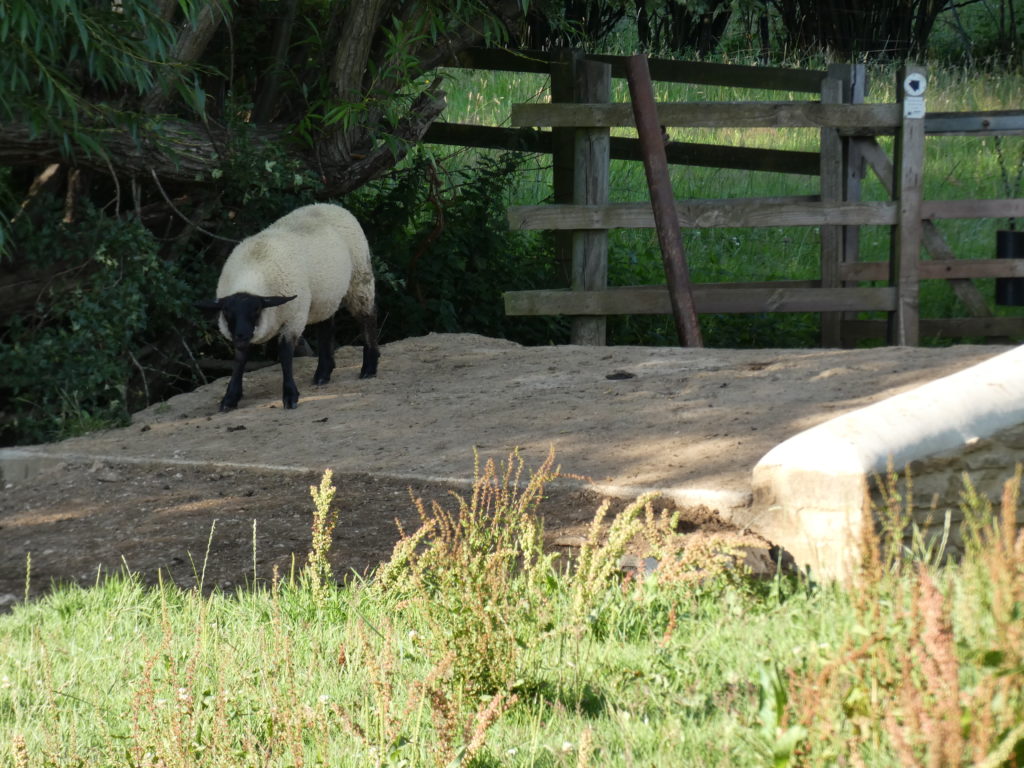
Al let the sheep into the orchard, which is a good way of clearing out some of the undergrowth. However the lambs are now large enough to make a lot of trouble while still being young enough to be springy and gung-ho.
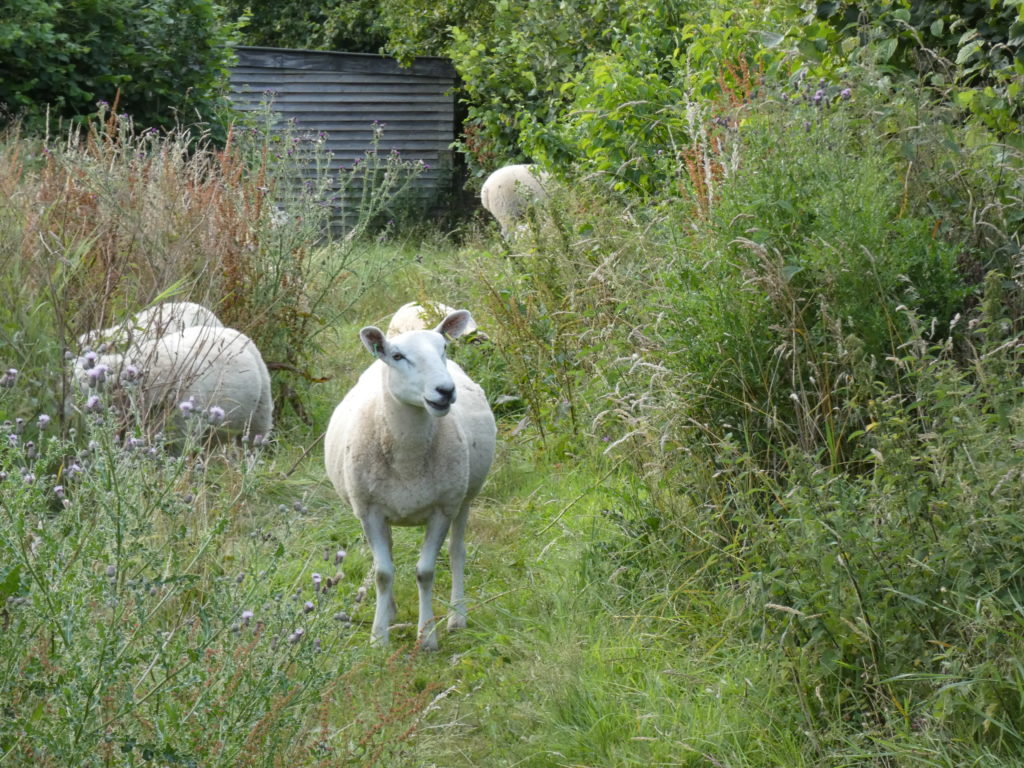
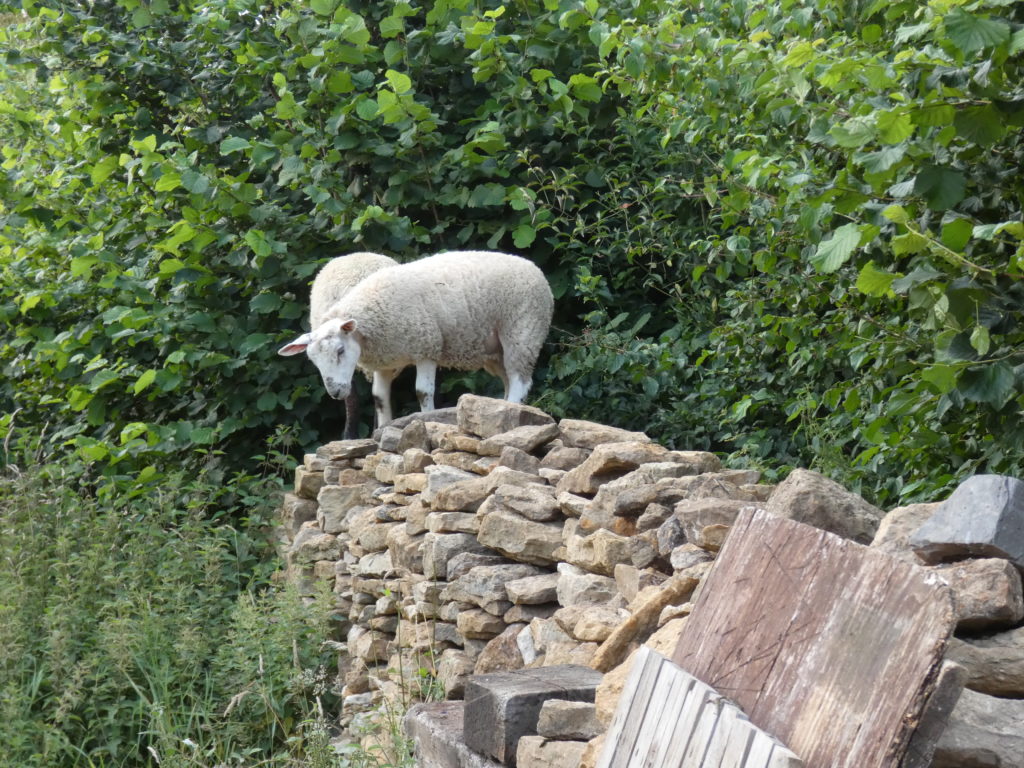
Yup, up they climbed onto the carefully stacked stash of stone for…something or other in due course. They were very keen to eat the nice hazel hedge up there, because literally everything is nicer to eat than grass. And it turns out that young sheep can scramble up and jump down just like goats. This was all very well but the wall between the orchard and the Rumwoldstow cloister garden has been taken down so that the foundations of the old Roman gatehouse can be built. And those sheep decided that Rumwoldstow looked much more interesting so managed to knock aside the panels blocking the gap and go for a good rampage around the gardens.
I say, I say, I say, how can you tell if there have been sheep in your bed?
Hoofprints in the beetroot!
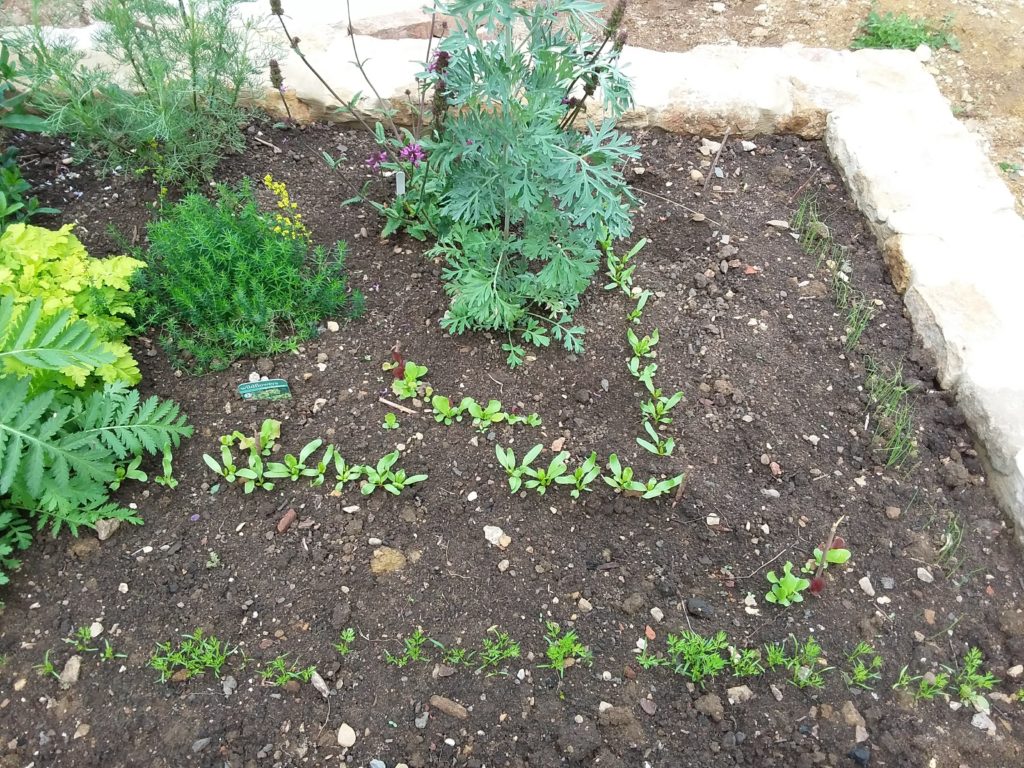
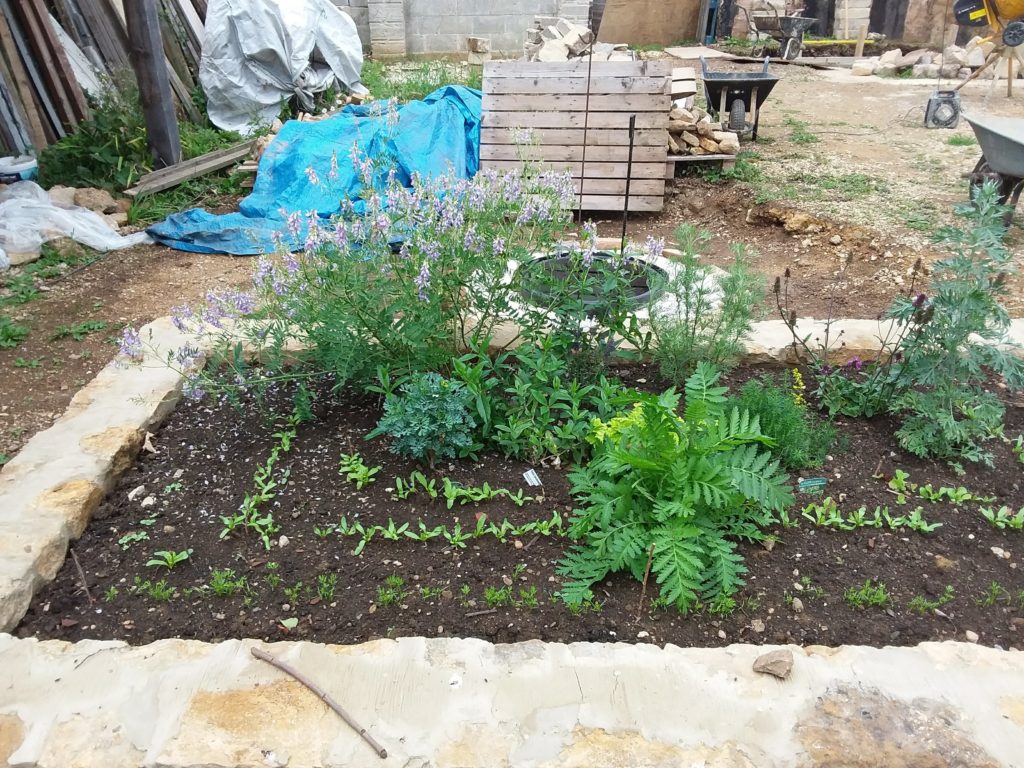
Overall the veg are coming on well in the new bed, with only the dwarf green beans stubbornly refusing to come up. These are all late varieties, it’s a bit marginal but I hope we’ll get some crop of white beetroot, salad leaves, carrots and spring onions. Two of the second planting of beans have finally germinated, these are ones that I soaked for an hour before planting. And one got firmly sheep-trodden so I can’t really blame it. I am sure that next year I’ll need to move some of the larger plants around as they’ll get a lot bigger, but just for now there is space for them all. And the snails haven’t discovered them yet, perhaps because of the walls.
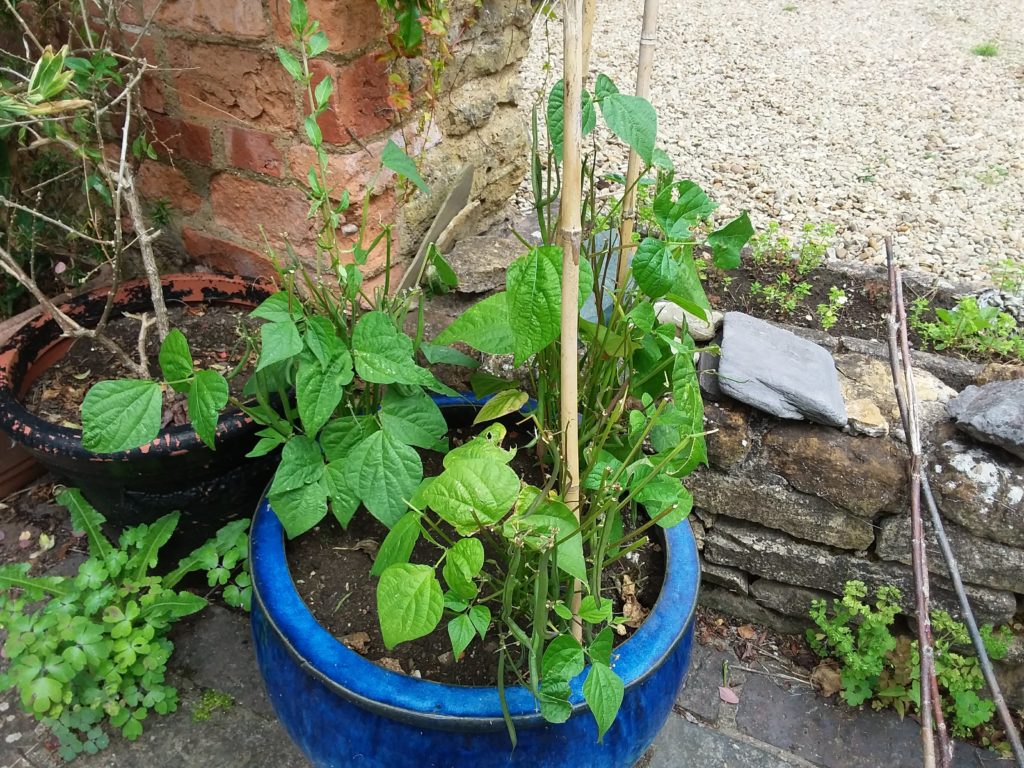
Back in the home garden, the older dwarf green beans proved a tasty target for the sheep before they all ran out into the road…then fortunately all ran back! I’ve been very lucky, the sheep might have eaten and trampled a lot more before Al shooed them back to their orchard.
Every garden should have some kind of water feature, for the insects, birds and small creatures to drink at, and just because it’s nice. I pondered for some time how to shoehorn in a pond or something in the Rumwoldstow monastery garden, and finally came up with a plan. And that plan is being actioned by the great energy and skill of Brother Julian – with the stonemasonry of Chris to follow in due course.
The plan is to build a fake Roman well, purportedly part of the old fort within which the monastery is sited. Like the rest of Rumwoldstow, this will be ‘authentish’. The water table is about 1.5 m down and an actual well would be hazardous, and not of benefit to wildlife. So the plan is to set a round pond liner into the ground with a low wall built around it – and a couple of little tunnels to allow the frogs and so on to creep in and out.
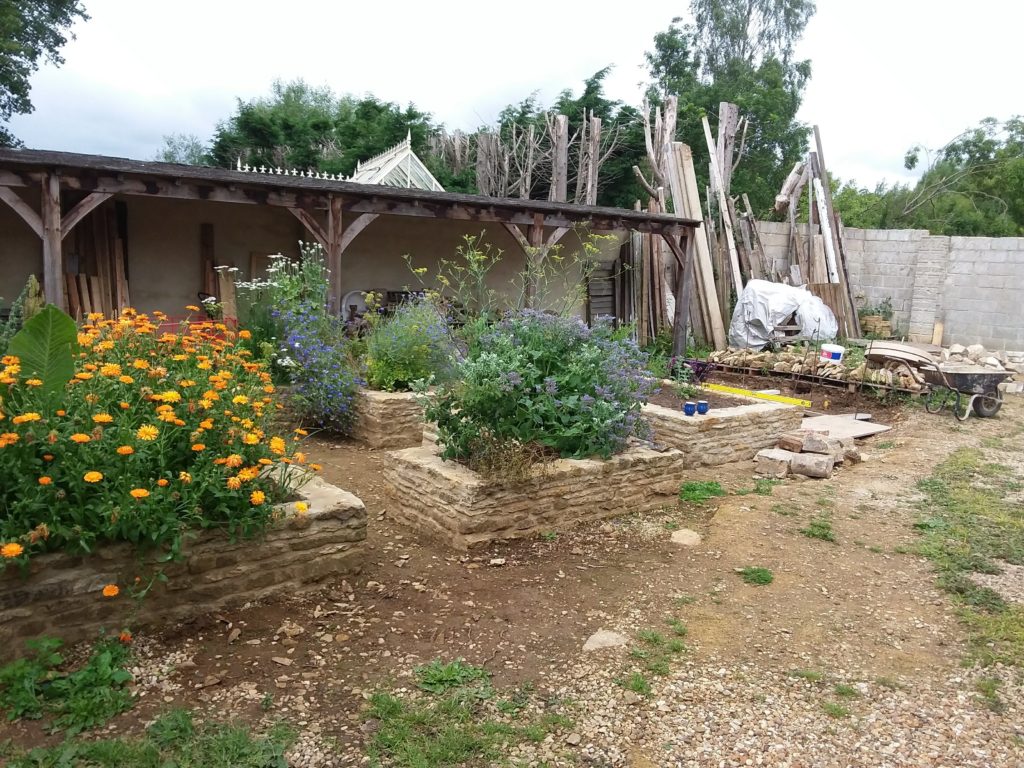
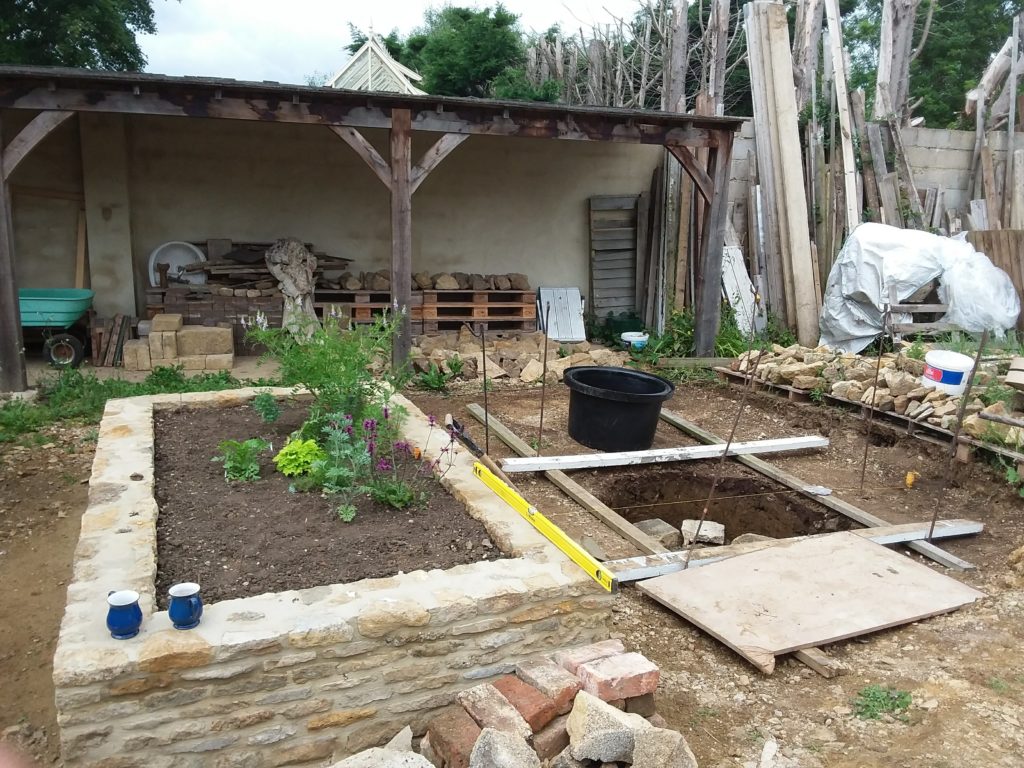
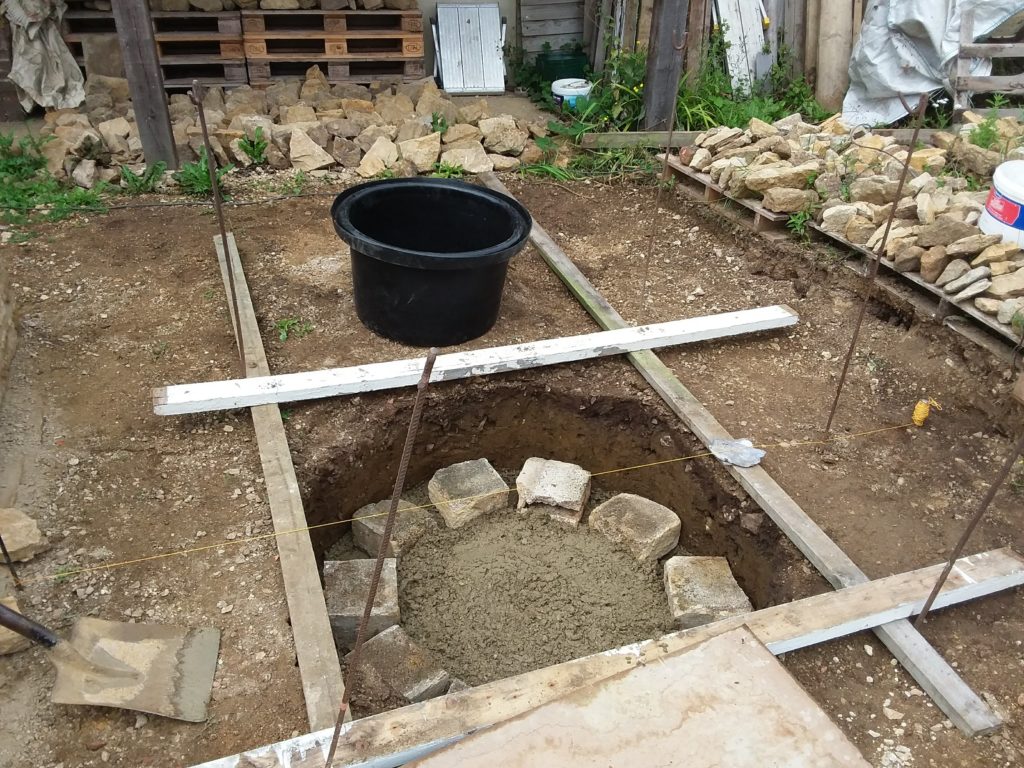
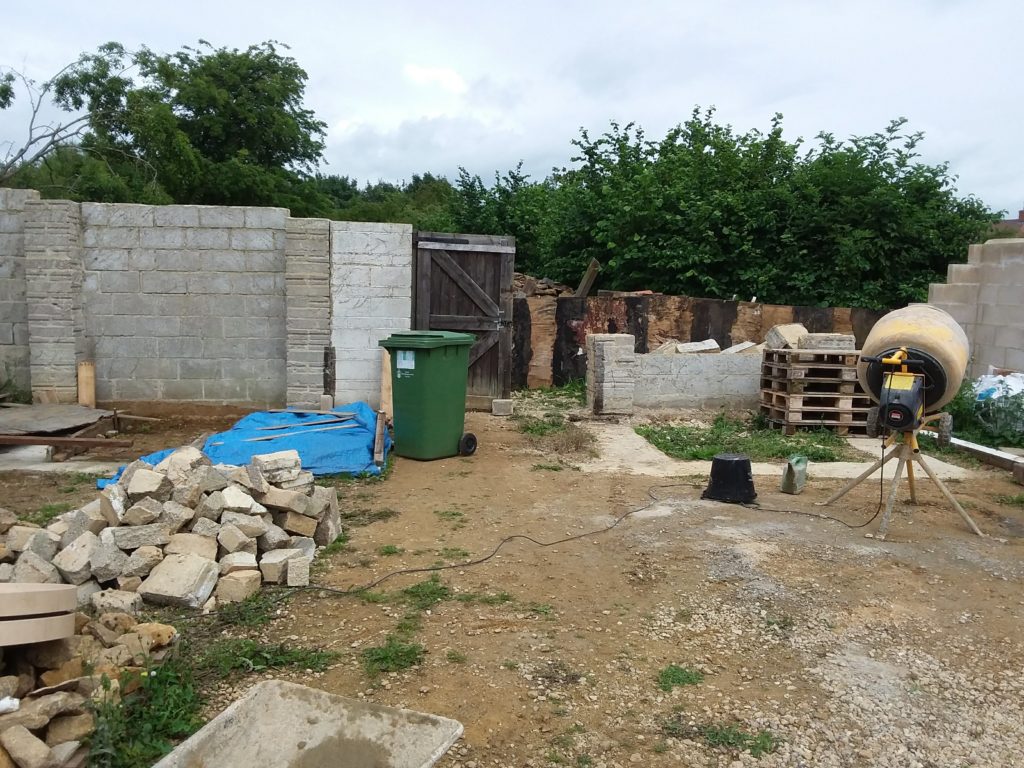
In addition, the brothers have begun demolishing the shonky old end wall (once the north wall of a breeze block barn) and reopening the full width of the gate. Watch this space!
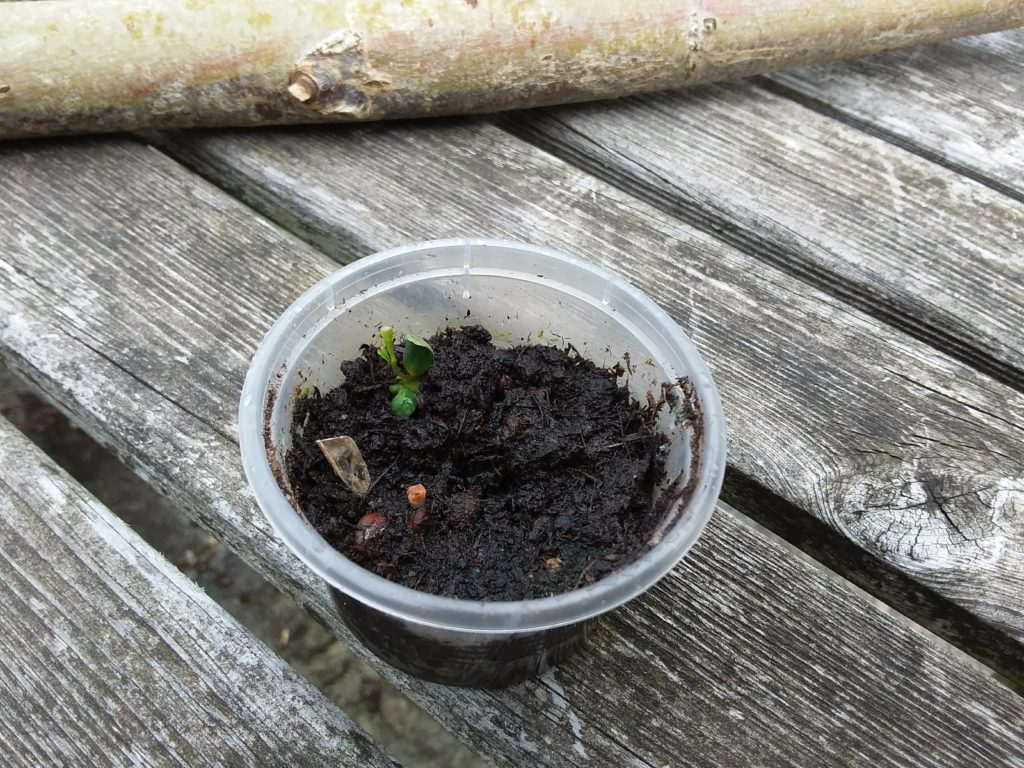
I planted an apple seed which had started to germinate inside the apple (a Cripps Red). It’s currently about 10mm high. I’ve always wanted to grow an apple tree from seed and have a unique apple tree. Will this be the one? Or will it die / produce nothing worth eating? Again, watch this space…
I was super excited when Brother Alf reported that a wren was building a nest in the corner of the cloister. We assumed that the female would eschew it because there’s too much human activity including the sweet song of the concrete mixer as work begins on the Roman gatehouse…but no! She clearly thought it a des res and for several weeks we’ve been seeing little wrens flying in and out of the cloister, bearing food for the chicks whose cries at feeding time have become louder and louder.
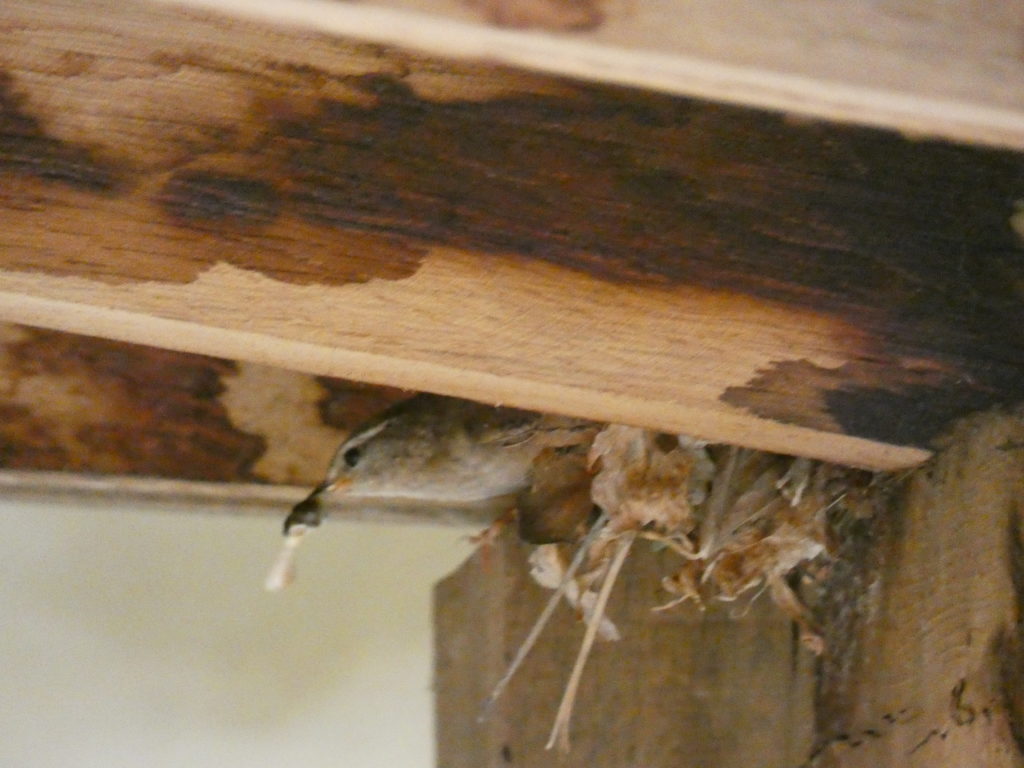
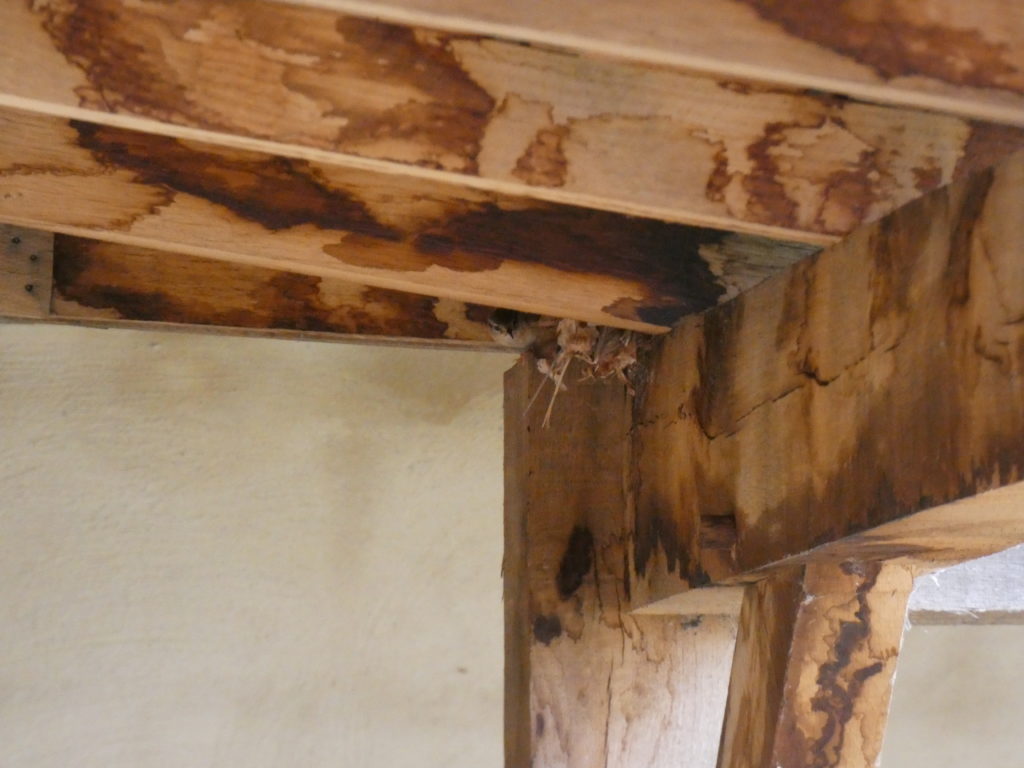
For the last couple of days however it’s been completely silent. I hope this means the chicks have fledged and moved on; I read up on it, and apparently it’s dangerous for chicks to hang around the nest, because the longer they stay, the more likely predators are to see or smell the nest. Smelly things apparently, chicks, and you can see why. So while the dead silence is alarming, it’s probably a good sign and we’ll keep our eyes open for fledgelings around the place. I saw a few earlier in the year so I’m guessing this is a second brood. Yay wrens. I never saw one before we moved to Rumwoldstow and now we have them breeding in our cloister! The next question is whether we should remove the nest and clean the area to make it nice for them next year? Or do they ever reuse nests? Time for a little research…
Brother Julian has filled the new raised bed to the north of the four square beds, with soil and horse manure. I’ve planted a collection of perennials which are more utilitarian than those in the first four beds. Some were used for dyeing, some for repelling insects, and some for medicine. The bees have already found the goat’s rue and the hyssop – which is sadly rock hyssop, and so probably not exactly what the Anglo-Saxons used, but very close.
The wormwood and southernwood were gifts from another century – a Tudor re-enactor who lives up the road donated cuttings to Rumwoldstow. Thank you James!
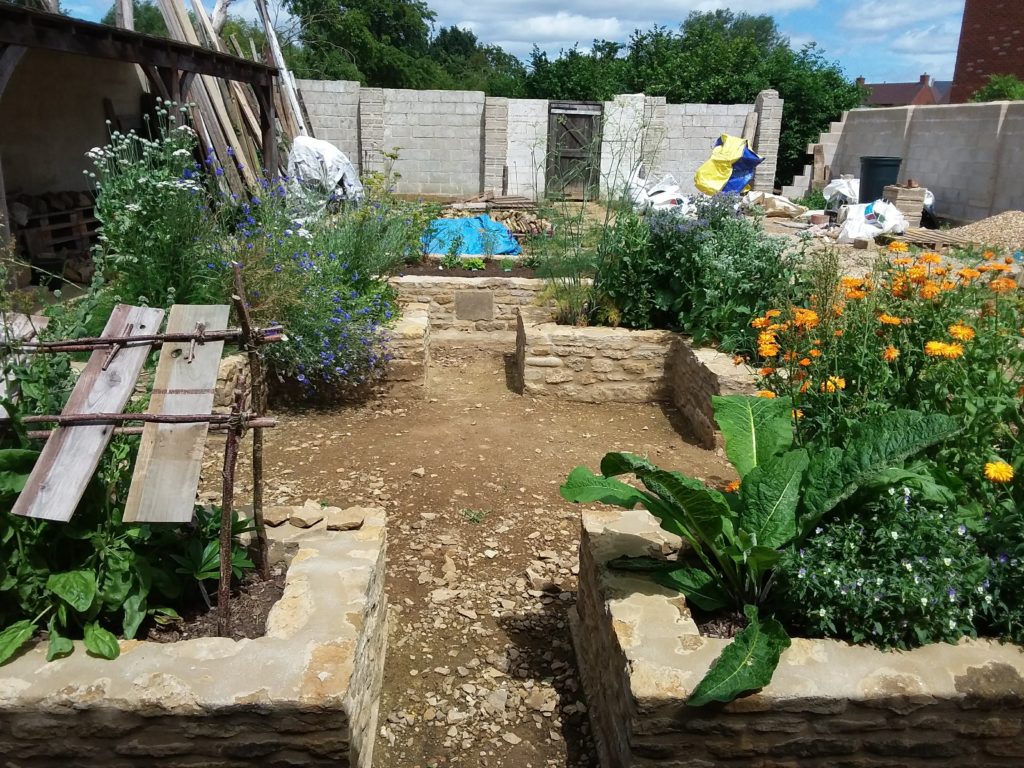
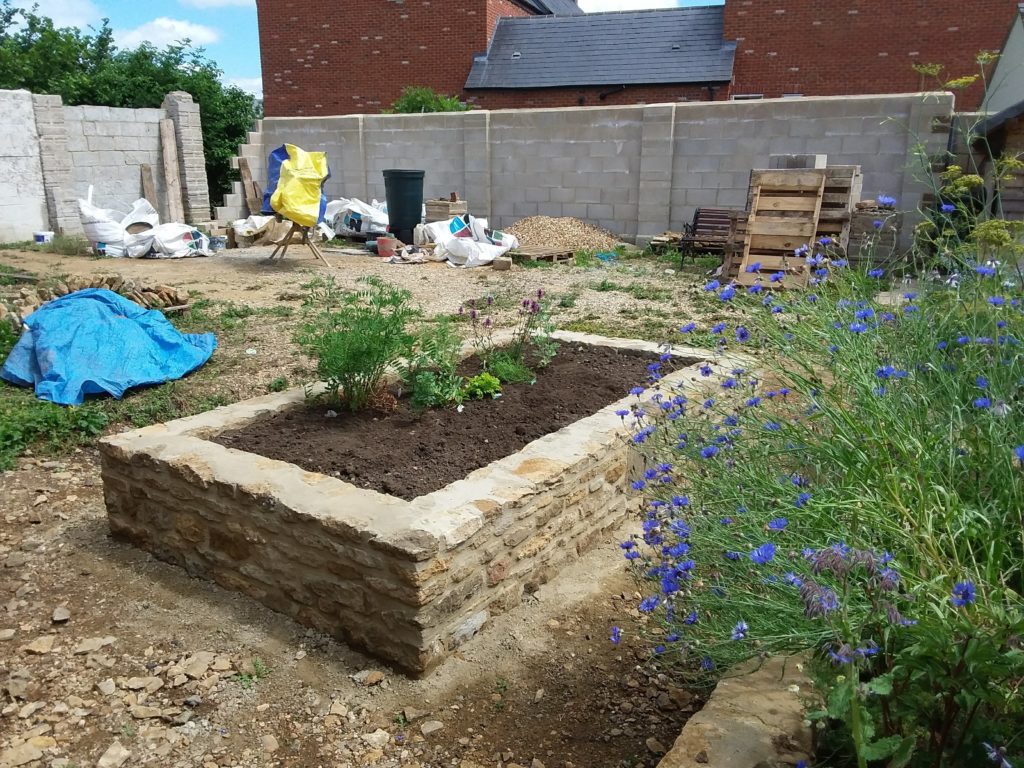
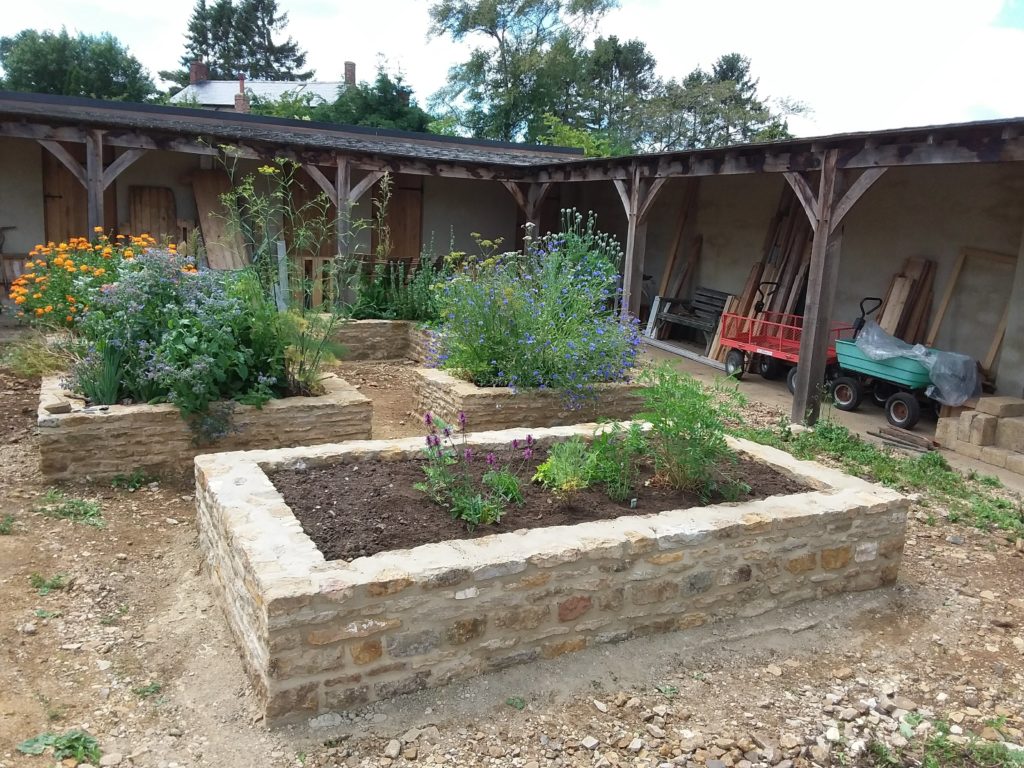
The wren’s nest in the corner of the cloister seems to be occupied – an adult is seen flying to and fro frequently. And another small wonder is an out-of-season Christmas Rose, with this fine flower.
